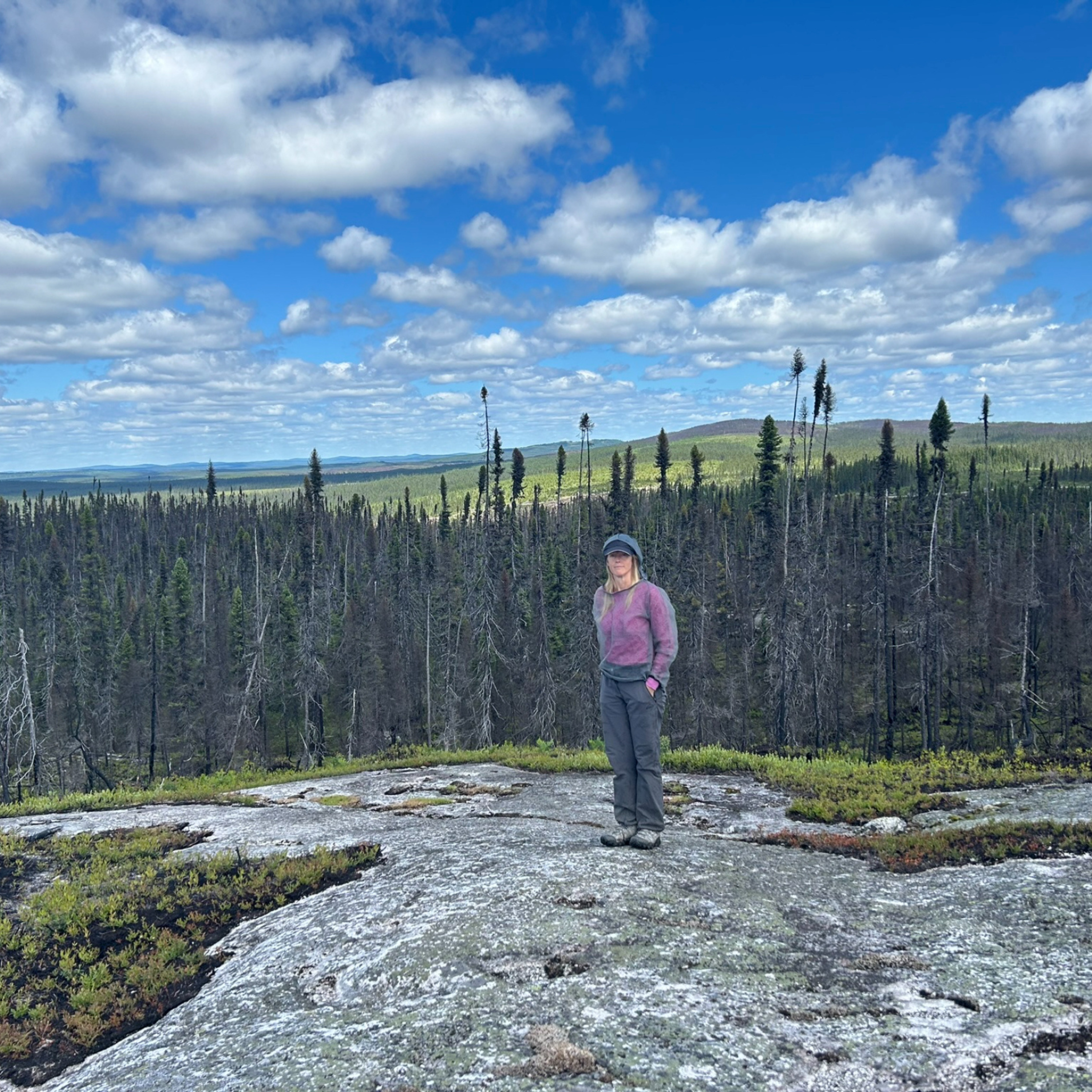
Discovery Polymetallic Project
A new gallium-rubidium-niobium-cesium discovery in Québec’s Frotet-Evans greenstone belt.
Project Summary
The 100% owned, 6,082 hectare Discovery Property is strategically located in the James Bay region of Quebec, approximately 100 kilometers north of
Chibougamau, and about 60 kilometers southwest of the past-producing Troilus Mine, which yielded over 2 million ounces of gold between 1997 and 2010 and retains indicated and inferred resources totaling an additional 8.11 million ounces. Spanning approximately 6,000
hectares, the Discovery Property encompasses a significant geological structure within the
Frotet-Evans Greenstone Belt, a region with a rich history of gold and copper production. Notably, the property lies on strike with holdings of Troilus Gold Corp. and Osisko Mining Inc.,
benefiting from road access and hydroelectric lines traversing the area.
Initially considered for its gold potential, the Company has recently announced a new gallium-rubidium-niobium-cesium critical metals discovery on on the property, further enhancing the potential of this dynamic asset.
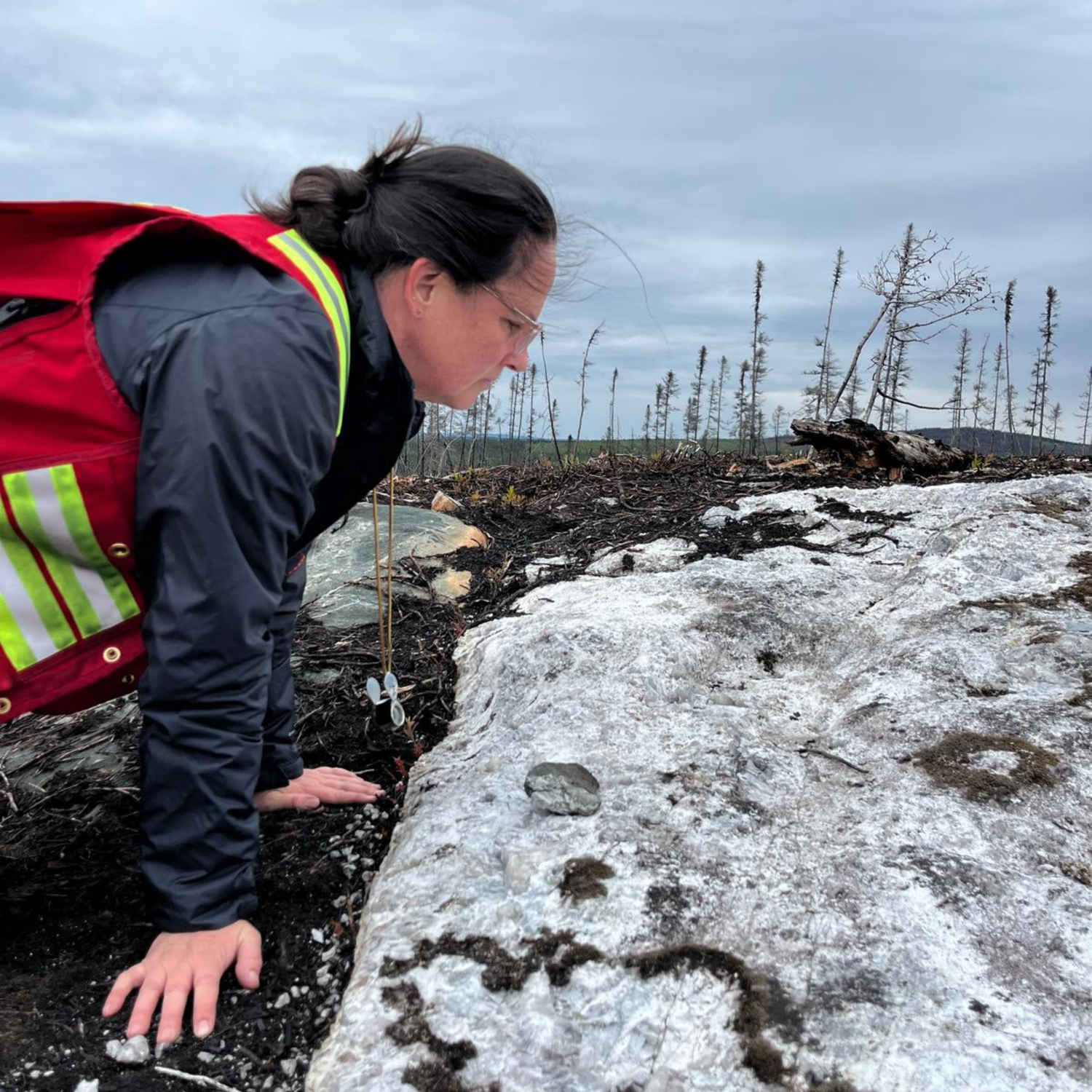
Geological Highlights
- Frotet-Evans Greenstone Belt: This belt is renowned for its complex geological formations, hosting a variety of mineral deposits, including gold, copper, zinc, lithium, rare earth elements, and iron.
- Structural Geology: The property covers significant structural features that are conducive to hosting polymetallic mineralization, making it a prime target for multi-commodity exploration.
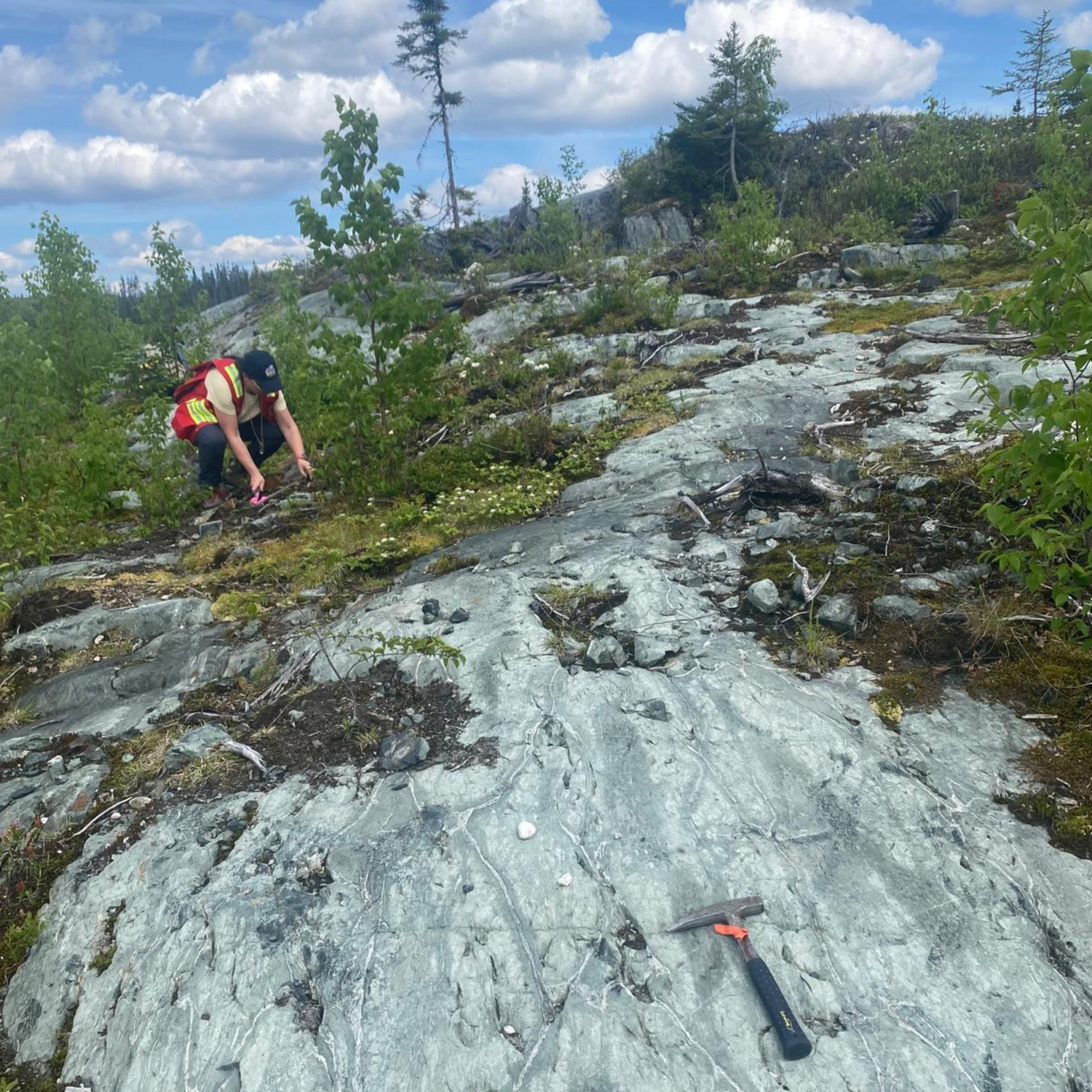
Exploration Activities
Initial exploration efforts have focused on surface sampling and channel assays to assess the property’s mineral potential. Notably, Channel 3 yielded significant gold values, including:
- 0.5 meters at 14.367 g/t Au
- 0.5 meters at 4.133 g/t Au
- 0.5 meters at 8.332 g/t Au
- 0.5 meters at 4.904 g/t Au
These results indicate the presence of high-grade gold mineralization at surface, warranting further detailed exploration.
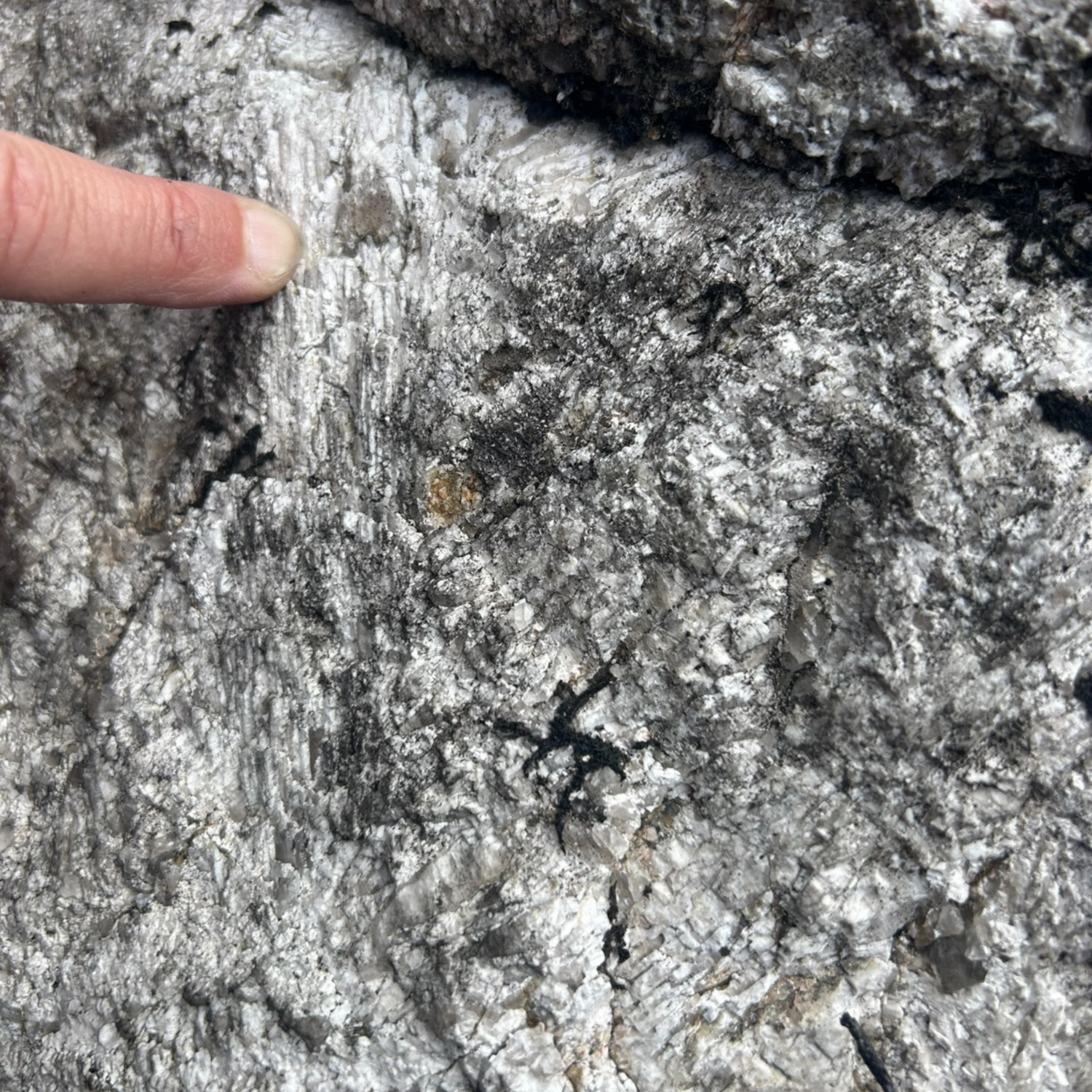
Gallium-rubidium-niobium-cesium
A New Discovery
The Company recently announced that it re-examined its drill core assays at its 100% owned Discovery project and has discovered elevated and consistent intervals of gallium, rubidium, cesium, niobium, and tantalum. Notably, the Company intersected:
- 37gpt gallium, 936gpt rubidium, 72gpt niobium, 8gpt cesium, and 10gpt tantalum over 30 meters from 9m to 39m.
- 38gpt gallium, 694gpt rubidium, 72gpt niobium, 8gpt cesium, 9gpt tantalum over 150 meters from 44 to 194 meters.
- 37gpt gallium, 651gpt rubidium, 57gpt niobium, 15gpt cesium, 11gpt tantalum over 73 meters from 17 to 90 meters.
- 44gpt gallium, 801gpt rubidium, 66gpt niobium, 16gpt cesium, 36gpt tantalum over 43 meters from 16 to 59 meters.
The Company’s 2018 and 2022 drill programs totalled approximately 2,432 meters, and 1,696 meters respectively, for a total of 4,128 meters across 22 holes (Figure 1). These programs were originally initiated for gold exploration, but given recent geopolitical developments regarding critical metals, the Company revisited these results to investigate any further potential that may exist than what was originally considered in the past.
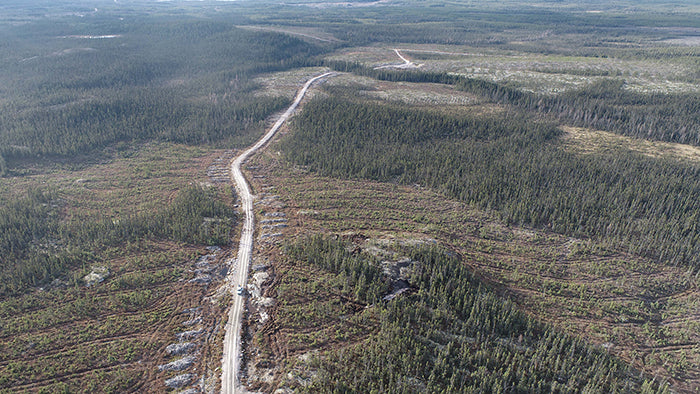
Infrastructure and Accessibility
- Access: The property is accessible via existing road networks, facilitating year-round exploration activities.
- Power: Proximity to hydroelectric lines provides a reliable power source for potential future development.
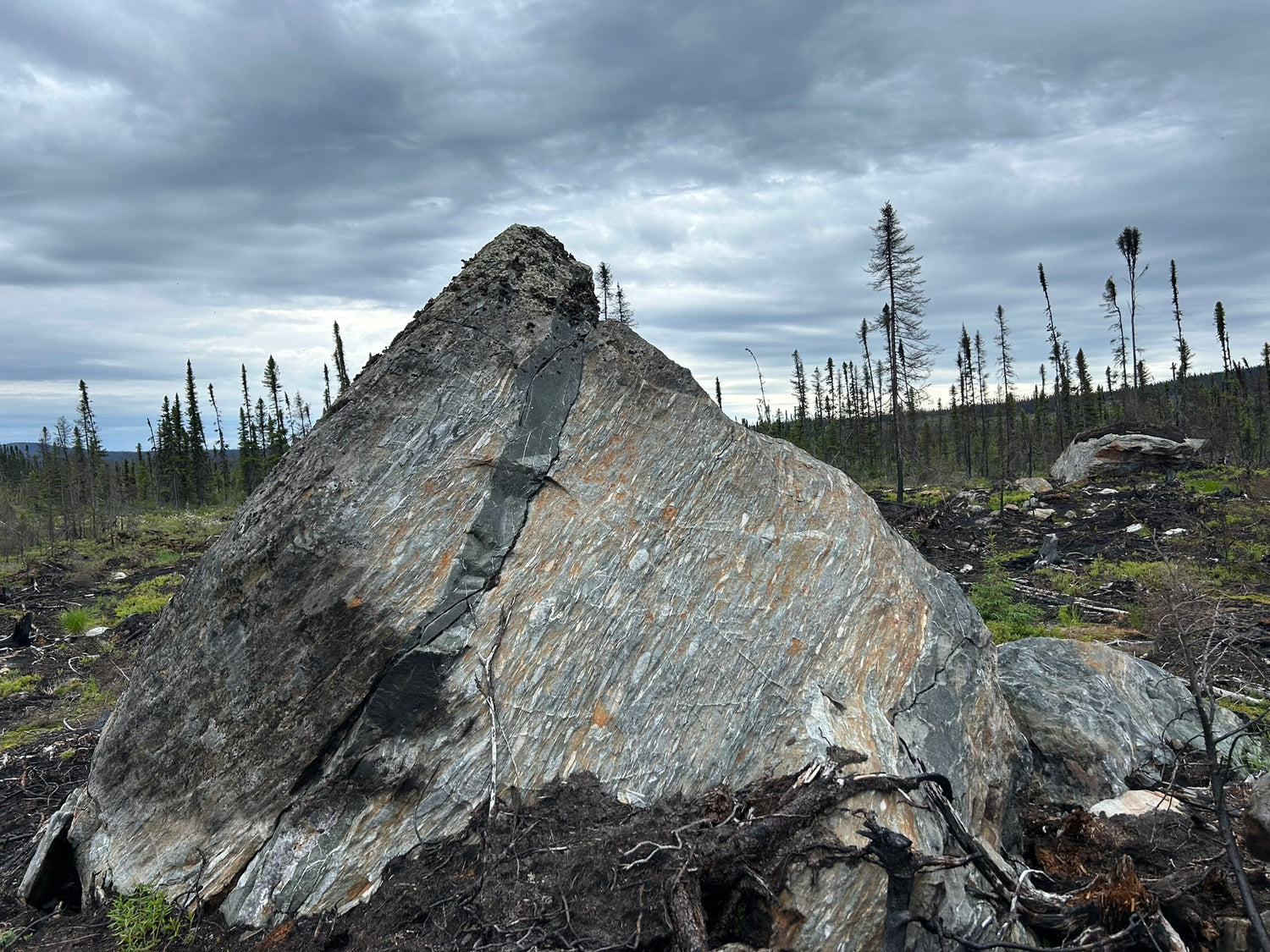
Strategic Significance
The Discovery Property’s location within a prolific mining belt, coupled with encouraging initial exploration results, underscores its potential to host significant polymetallic mineralization. Its proximity to past-producing mines and current exploration projects enhances its strategic importance in contributing to the regional mining landscape, not to mention its value with respect to the global critical metals race in light of the Company’s recent gallium-rubidium-niobium-cesium discovery on the property.
2018 & 2022 Drill Map
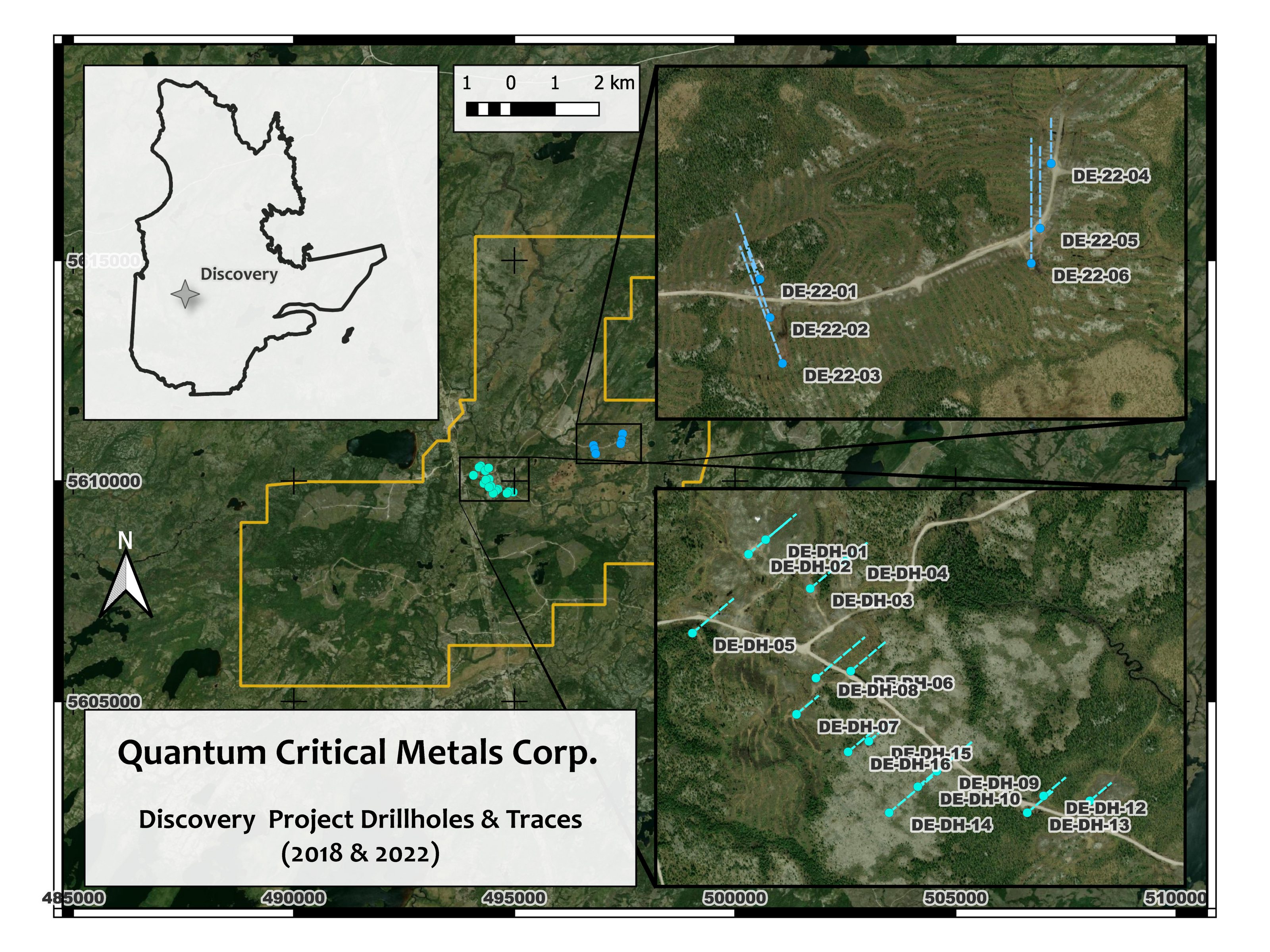
Summary of 2018 Critical Metals Results
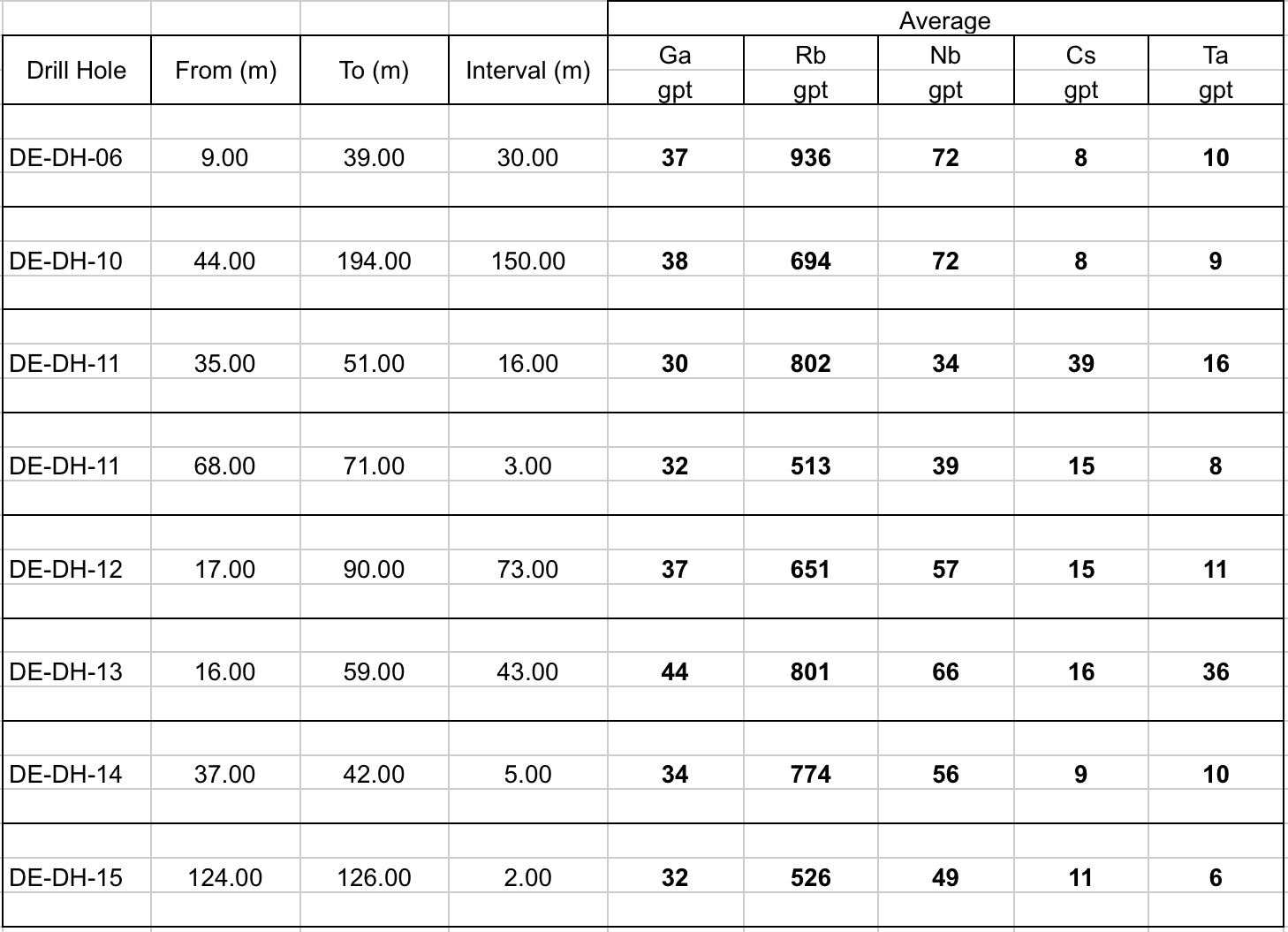
Summary of 2022 Critical Metals Results
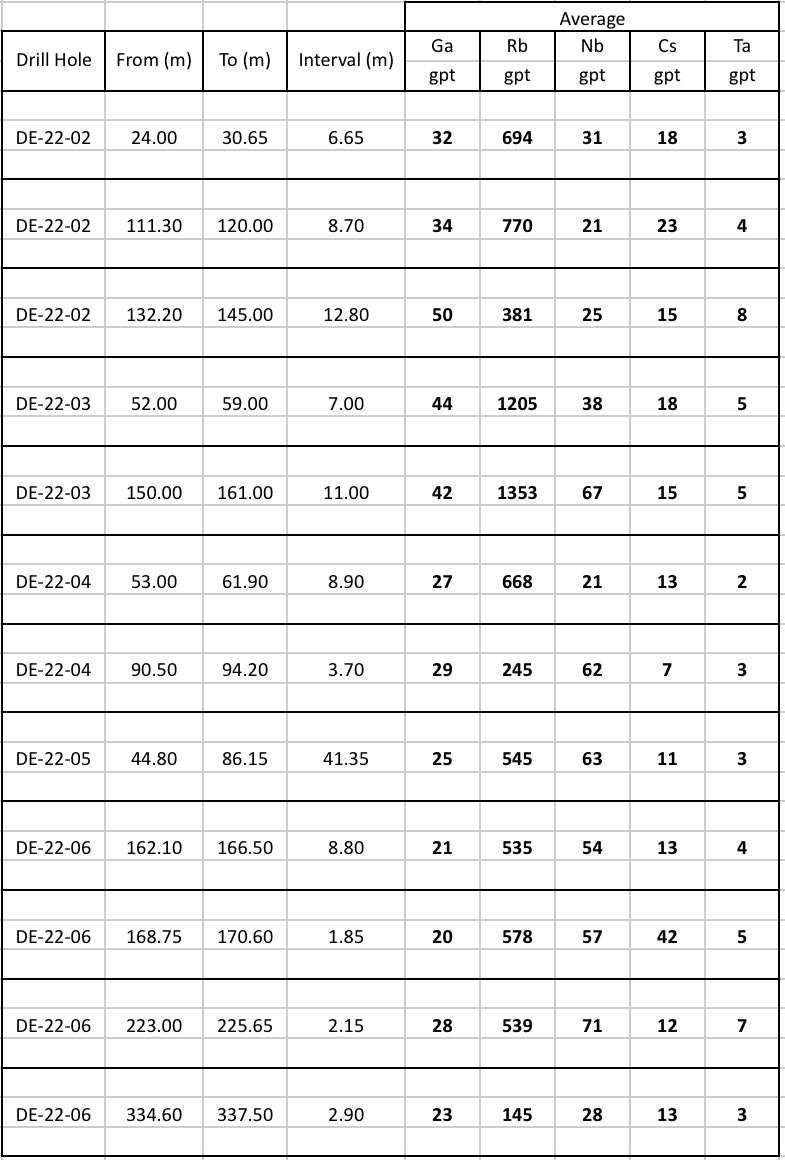
Full 2018/22 Discovery Drill Results
Click below to to download the complete 2018/22 drillIng assay results.
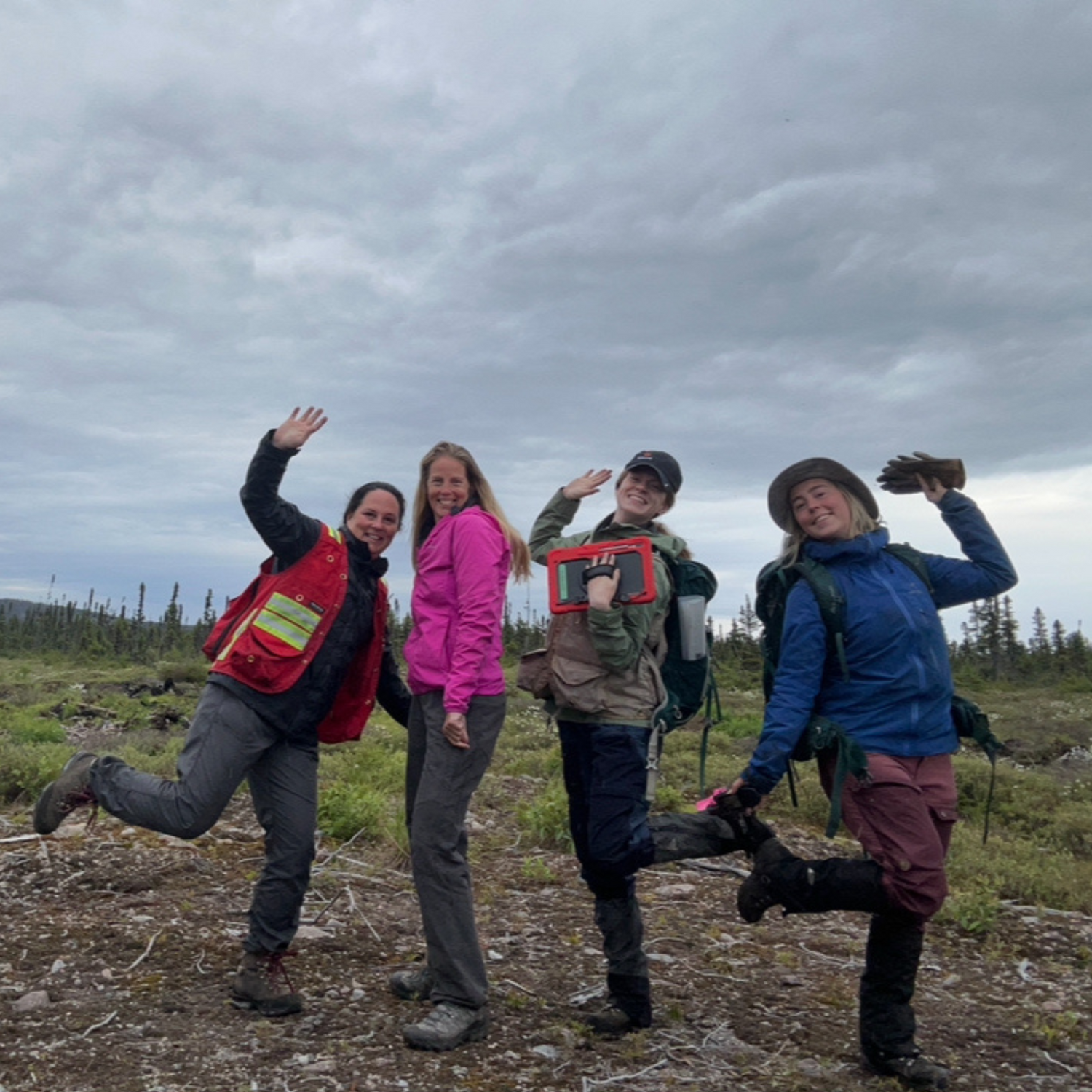
Next Steps
Building upon the new critical metals discovery on the property, the next phase of exploration will include:
- Detailed Geological Mapping: To delineate mineralized zones and understand the structural controls on mineralization.
- Closer review of Geological and Geophysical Surveys: To identify subsurface anomalies indicative of polymetallic deposits.
- Mineralogy and Metallurgical testing.
- Drilling Programs: To test the depth and continuity of surface mineralization and assess the property’s resource potential.
These steps aim to advance the Discovery Property towards a comprehensive evaluation of its economic viability.
